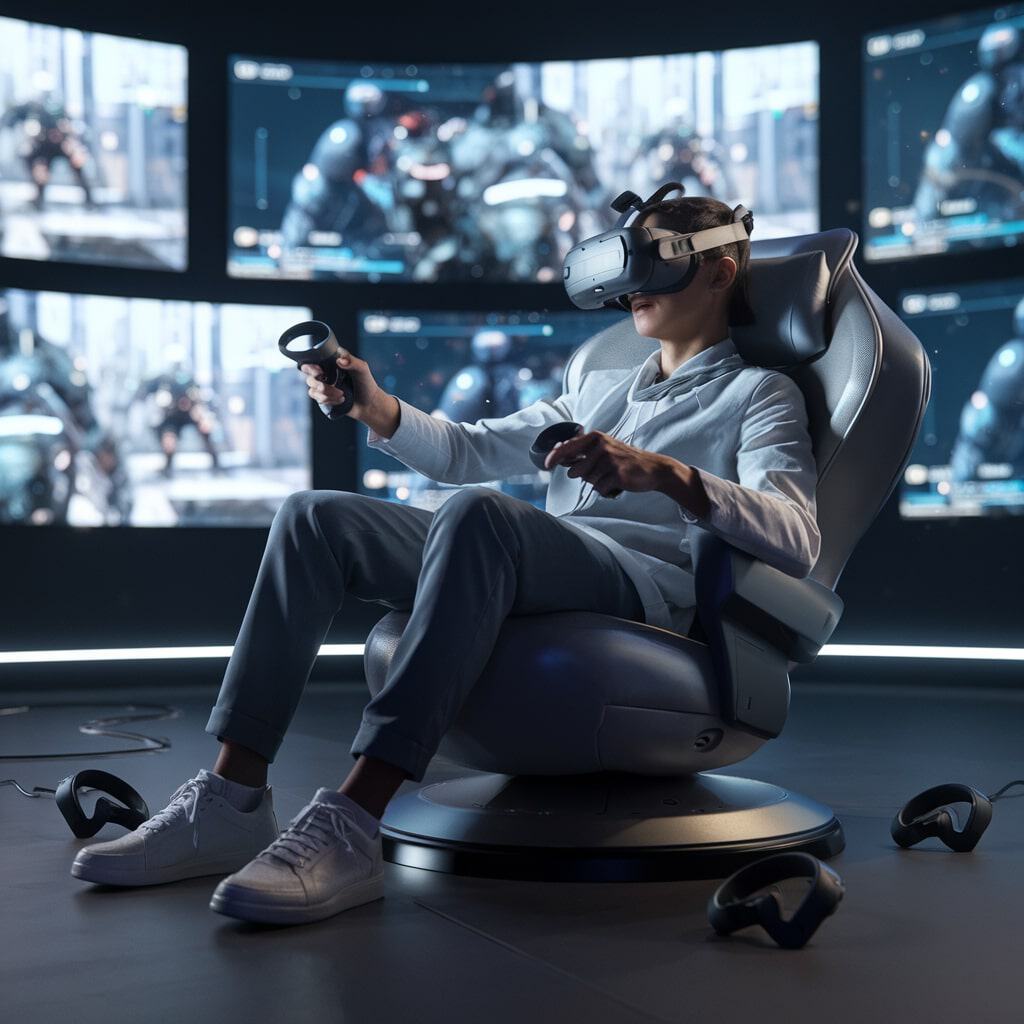Virtual reality (VR) gaming is advancing at an astonishing pace, with new technologies pushing the boundaries of immersion, interaction, and accessibility. As we look ahead to 2030, the landscape of VR gaming is set to evolve in ways that will redefine how we experience digital worlds. From hardware innovations to AI-driven experiences, let’s explore what the future holds for VR gaming.

1. Hyper-Realistic Graphics and Enhanced Immersion
By 2030, VR graphics will be almost indistinguishable from reality. Advancements in rendering technologies, such as ray tracing and real-time photogrammetry, will allow developers to create ultra-detailed environments. Combined with high-resolution microLED displays, VR headsets will offer visuals with near-perfect clarity, eliminating pixelation and motion blur.
Furthermore, full-body tracking and advanced haptic feedback suits will enhance immersion by allowing players to feel every movement, texture, and impact in the virtual world. The integration of smell and taste simulation is also a possibility, further deepening the sense of realism.
2. AI-Driven NPCs and Dynamic Storytelling
Artificial intelligence will revolutionize storytelling and game design in VR. NPCs (non-player characters) will no longer follow scripted behaviors but will adapt and respond dynamically to player actions. AI-driven dialogue systems will enable natural, unscripted conversations with in-game characters, making narrative-driven games feel like living, breathing worlds.
Procedural world generation, guided by AI, will allow for endless game worlds that evolve based on player choices, ensuring that no two experiences are the same.
3. Wireless and Ultra-Lightweight VR Hardware
The clunky VR headsets of today will be replaced by sleek, lightweight, and fully wireless models. By 2030, we can expect ultra-thin, high-performance VR glasses that rely on cloud-based processing, reducing the need for bulky local hardware. With 6G connectivity, latency will be virtually nonexistent, allowing for seamless cloud gaming experiences.
Moreover, brain-computer interfaces (BCI) may begin to emerge, enabling direct interaction with virtual worlds using brain signals, eliminating the need for traditional controllers.
4. VR Esports and Social Experiences
Esports will take a massive leap forward with VR, offering competitive gaming experiences that feel like real sports. VR arenas will become popular, where players physically move and compete in large-scale virtual tournaments. Spectators will also be able to experience the action from a first-person perspective using their own VR headsets, making competitive gaming more engaging than ever.
Additionally, social VR will evolve into fully immersive metaverse-like spaces, where people can meet, interact, and engage in shared activities, from concerts and parties to collaborative workspaces and educational simulations.
5. The Blending of VR and Augmented Reality (AR)
By 2030, the lines between VR and AR will blur, creating seamless mixed-reality experiences. Players will be able to transition between virtual and physical environments fluidly, making way for hybrid games that merge real-world objects with digital overlays. This will enhance multiplayer experiences, allowing players to interact with digital characters and objects in their actual surroundings.
Conclusion
The future of VR gaming is filled with exciting possibilities. With advancements in graphics, AI, hardware, esports, and mixed reality, VR gaming in 2030 will be more immersive, social, and realistic than ever before. As these technologies continue to develop, the way we play, interact, and experience digital worlds will change forever. One thing is certain: the next decade will be a game-changer for VR enthusiasts worldwide.
